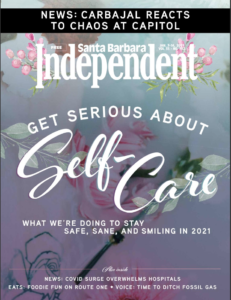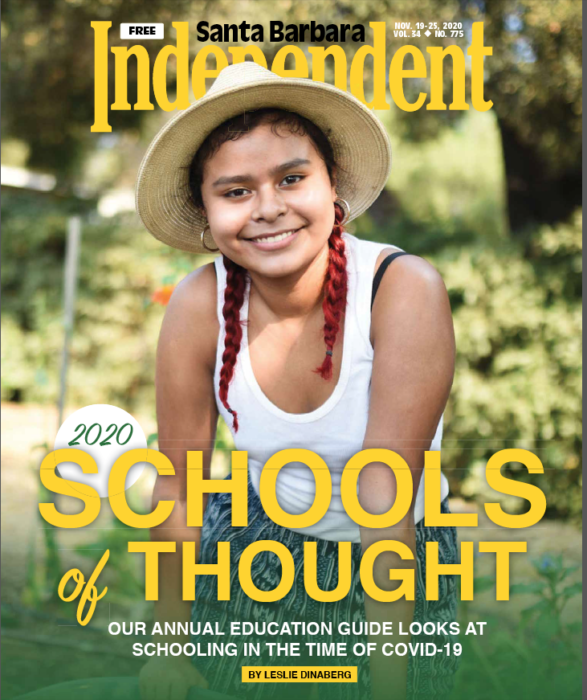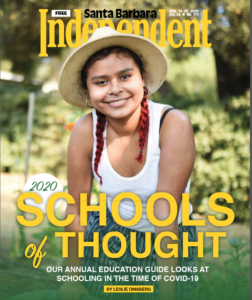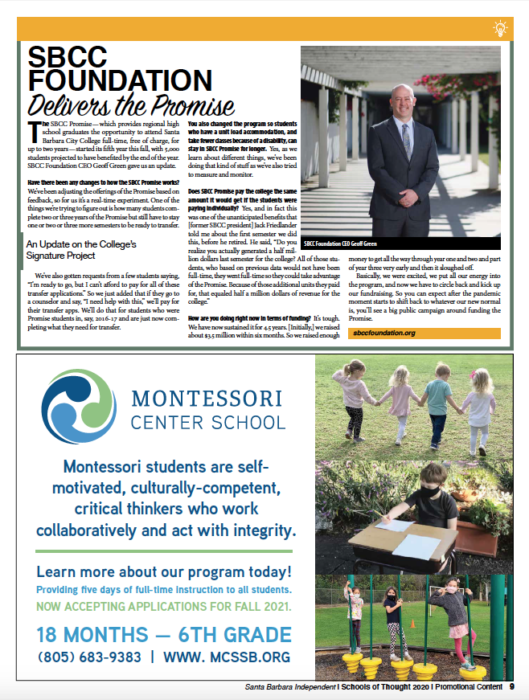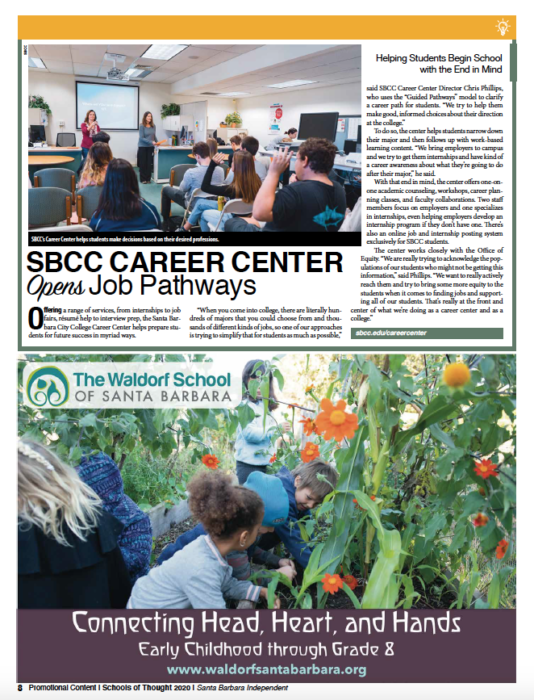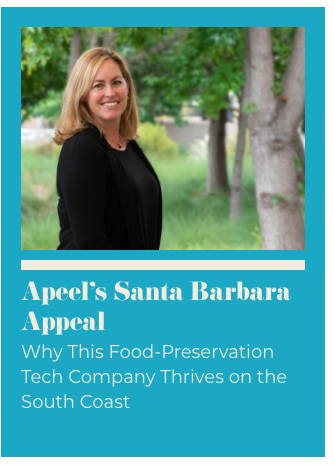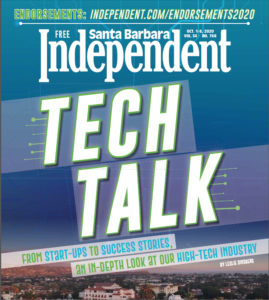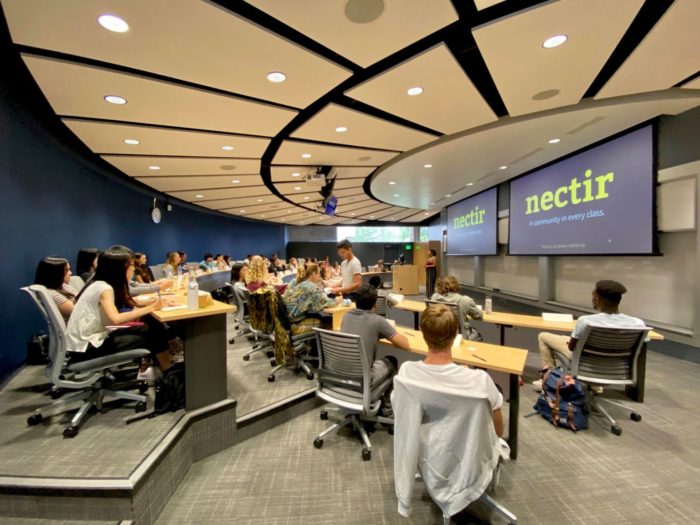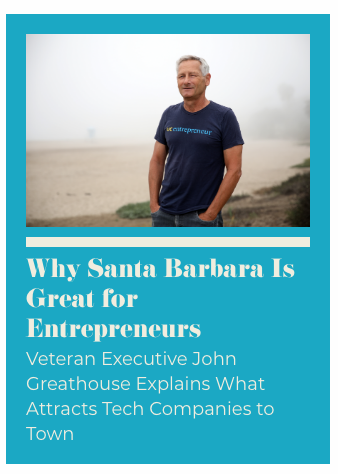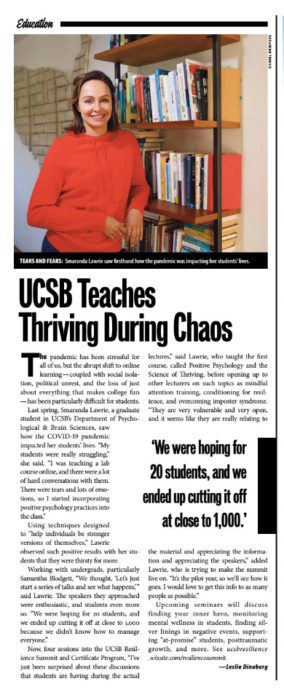
UCSB Teaches Thriving During Chaos, originally published in the Santa Barbara Independent Self-Care issue, January 7, 2021.
The pandemic has been stressful for all of us, but the abrupt shift to online learning —coupled with social isolation, political unrest, and the loss of just about everything that makes college fun— has been particularly difficult for students.
Last spring, Smaranda Lawrie, a graduate student in UCSB’s Department of Psychological
& Brain Sciences, saw how the COVID-19 pandemic impacted her students’ lives. “My students were really struggling,” she said. “I was teaching a lab course online, and there were a lot of hard conversations with them. There were tears and lots of emotions, so I started incorporating positive psychology practices into the class.”
Using techniques designed to “help individuals be stronger versions of themselves,” Lawrie observed such positive results with her students that they were thirsty for more.
Working with undergrads, particularly Samantha Blodgett, “We thought, ‘Let’s just start a series of talks and see what happens,’” said Lawrie. The speakers they approached were enthusiastic, and students even more so. “We were hoping for 20 students, and we ended up cutting it off at close to 1,000 because we didn’t know how to manage everyone.”
Now, four sessions into the UCSB Resilience Summit and Certificate Program, “I’ve just been surprised about these discussions that students are having during the actual lectures,” said Lawrie, who taught the first course, called Positive Psychology and the
Science of Thriving, before opening up to other lecturers on such topics as mindful
attention training, conditioning for resilience, and overcoming imposter syndrome.
“They are very vulnerable and very open, and it seems like they are really relating to the material and appreciating the information and appreciating the speakers,” added Lawrie, who is trying to make the summit live on. “It’s the pilot year, so we’ll see how it goes. I would love to get this info to as many people as possible.”
Upcoming seminars will discuss finding your inner hero, monitoring mental wellness in students, finding silver linings in negative events, supporting “at-promise” students, post-traumatic growth, and more. See ucsbresilience.wixsite.com/resiliencesummit.
Originally published in the Santa Barbara Independent on January 7, 2021. To see this story as it appeared in print, please click here.

